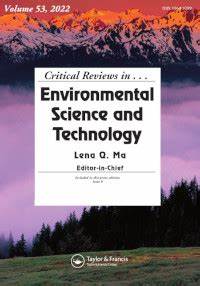Microbial dormancy evolution in the environments: Environmental adaptation and health risks of small colony variants
IF 13.2
1区 环境科学与生态学
Q1 ENVIRONMENTAL SCIENCES
Critical Reviews in Environmental Science and Technology
Pub Date : 2025-10-06
DOI:10.1080/10643389.2025.2566174
引用次数: 0
Abstract
Natural environmental conditions fluctuate randomly, with various factors influencing multiple aspects of the microorganisms that live in them. In adverse environmental conditions, microorganisms can enter dormant states with low metabolic activities, which is a survival strategy for them to adapt to deleterious environmental changes. Small colony variant (SCV) state is one of the dormant states; the size of SCV colonies is nearly one-tenth that of those of wild-type (WT) parental bacteria. This review used scientometric analysis to summarize relevant publications on SCVs. SCV physiological characteristics modified by changes in cell size, as well as induction conditions and mechanisms, detection technologies, and elimination methods in natural environments, were systematically reviewed. Interactions between SCVs and other coexisting microorganisms are also discussed. The emergence of SCVs ensures the survival of bacterial communities by providing metabolic and competitive protection; however, they also pose a potential threat to ecosystems and human health. For example, pathogens may enter the SCV state and move across geographical space along with their host’s geographical movements. Future research directions related to the transmission and control of SCVs in the natural environment are also highlighted. This review expands the understanding of the living states of microorganisms in natural environments and reveals the effects of SCVs on the evolution and persistence of both individual microorganisms and microbial populations.环境中微生物的休眠进化:小菌落变异的环境适应和健康风险
自然环境条件是随机波动的,各种因素影响着生活在其中的微生物的多个方面。在不利的环境条件下,微生物可以进入低代谢活动的休眠状态,这是它们适应有害环境变化的生存策略。小菌落变异(SCV)状态是休眠状态之一;SCV菌落的大小几乎是野生型(WT)亲本细菌的十分之一。本文采用科学计量分析方法对scv相关文献进行综述。本文系统综述了SCV细胞大小变化对其生理特性的影响,以及自然环境下SCV的诱导条件和机制、检测技术和消除方法。还讨论了scv与其他共存微生物之间的相互作用。scv的出现通过提供代谢和竞争保护来确保细菌群落的生存;然而,它们也对生态系统和人类健康构成潜在威胁。例如,病原体可能进入SCV状态,并随着宿主的地理运动而跨越地理空间。并对scv在自然环境中的传播与控制等未来的研究方向进行了展望。这篇综述扩大了对自然环境中微生物生存状态的理解,揭示了scv对个体微生物和微生物群体的进化和持久性的影响。
本文章由计算机程序翻译,如有差异,请以英文原文为准。
求助全文
约1分钟内获得全文
求助全文
来源期刊
CiteScore
27.30
自引率
1.60%
发文量
64
审稿时长
2 months
期刊介绍:
Two of the most pressing global challenges of our era involve understanding and addressing the multitude of environmental problems we face. In order to tackle them effectively, it is essential to devise logical strategies and methods for their control. Critical Reviews in Environmental Science and Technology serves as a valuable international platform for the comprehensive assessment of current knowledge across a wide range of environmental science topics.
Environmental science is a field that encompasses the intricate and fluid interactions between various scientific disciplines. These include earth and agricultural sciences, chemistry, biology, medicine, and engineering. Furthermore, new disciplines such as environmental toxicology and risk assessment have emerged in response to the increasing complexity of environmental challenges.
The purpose of Critical Reviews in Environmental Science and Technology is to provide a space for critical analysis and evaluation of existing knowledge in environmental science. By doing so, it encourages the advancement of our understanding and the development of effective solutions. This journal plays a crucial role in fostering international cooperation and collaboration in addressing the pressing environmental issues of our time.

 求助内容:
求助内容: 应助结果提醒方式:
应助结果提醒方式:


